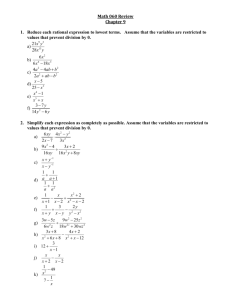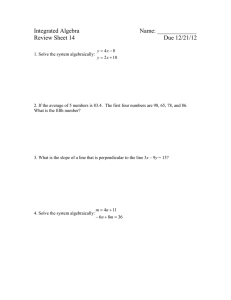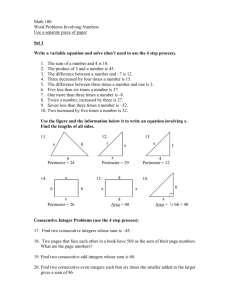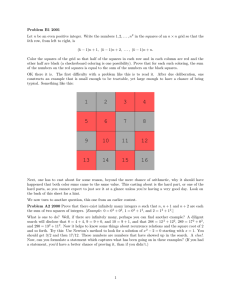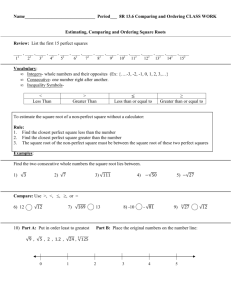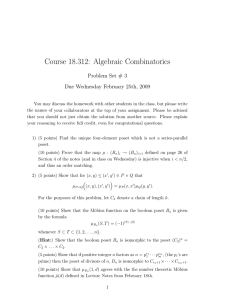Math 630 — Fall 2010 Homework 3
advertisement
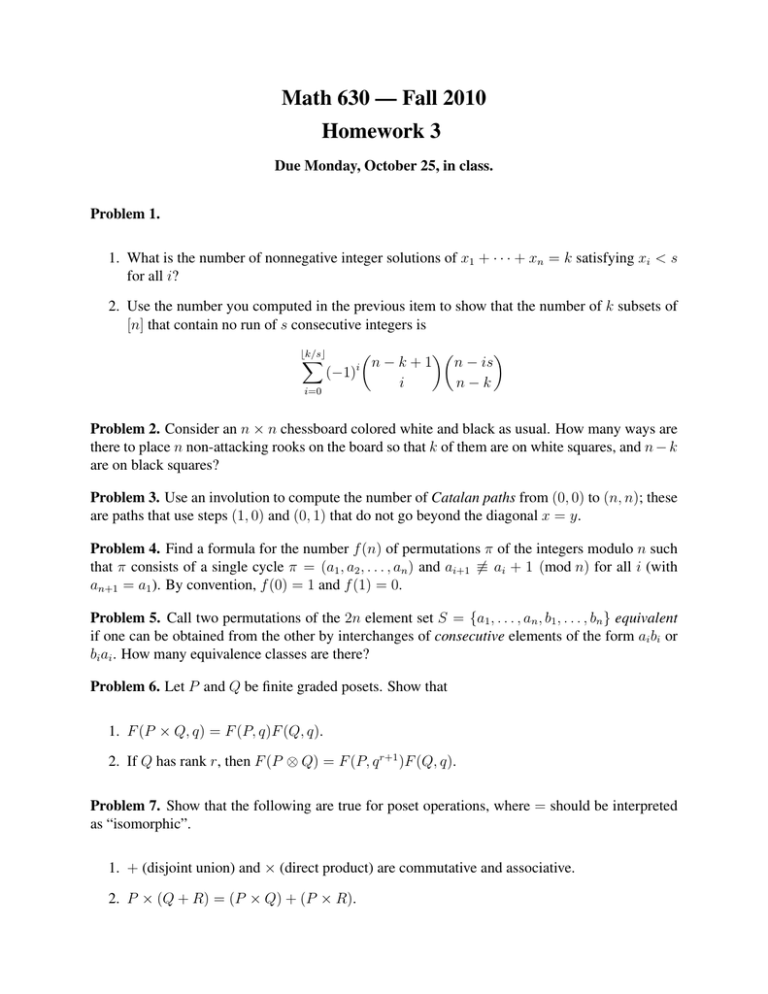
Math 630 — Fall 2010
Homework 3
Due Monday, October 25, in class.
Problem 1.
1. What is the number of nonnegative integer solutions of x1 + · · · + xn = k satisfying xi < s
for all i?
2. Use the number you computed in the previous item to show that the number of k subsets of
[n] that contain no run of s consecutive integers is
bk/sc
n − k + 1 n − is
(−1)
i
n−k
i=0
X
i
Problem 2. Consider an n × n chessboard colored white and black as usual. How many ways are
there to place n non-attacking rooks on the board so that k of them are on white squares, and n − k
are on black squares?
Problem 3. Use an involution to compute the number of Catalan paths from (0, 0) to (n, n); these
are paths that use steps (1, 0) and (0, 1) that do not go beyond the diagonal x = y.
Problem 4. Find a formula for the number f (n) of permutations π of the integers modulo n such
that π consists of a single cycle π = (a1 , a2 , . . . , an ) and ai+1 6≡ ai + 1 (mod n) for all i (with
an+1 = a1 ). By convention, f (0) = 1 and f (1) = 0.
Problem 5. Call two permutations of the 2n element set S = {a1 , . . . , an , b1 , . . . , bn } equivalent
if one can be obtained from the other by interchanges of consecutive elements of the form ai bi or
bi ai . How many equivalence classes are there?
Problem 6. Let P and Q be finite graded posets. Show that
1. F (P × Q, q) = F (P, q)F (Q, q).
2. If Q has rank r, then F (P ⊗ Q) = F (P, q r+1 )F (Q, q).
Problem 7. Show that the following are true for poset operations, where = should be interpreted
as “isomorphic”.
1. + (disjoint union) and × (direct product) are commutative and associative.
2. P × (Q + R) = (P × Q) + (P × R).
3. RP +Q = RP × RQ .
4. (RQ )P = RQ×P .
Problem 8. Show that a finite lattice L is modular if and only if for all x, y, z ∈ L such that x ≤ z
we have
x ∨ (y ∧ z) = (x ∧ y) ∨ z.
Conclude that distributive lattices are modular.
Problem 9. Prove Proposition 3.4.3 from the book.
Problem 10. Compute the rank generating function of the poset [m] × [n], where the order on [n]
and [m] is given by the usual order of natural numbers, and m, n > 0.


